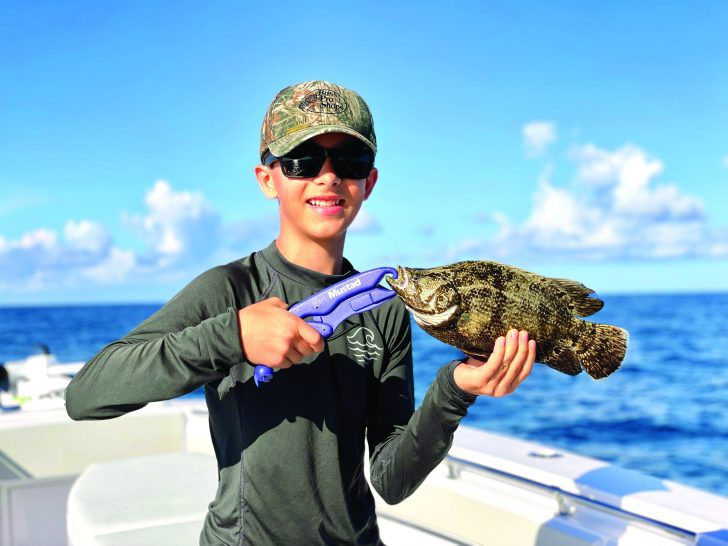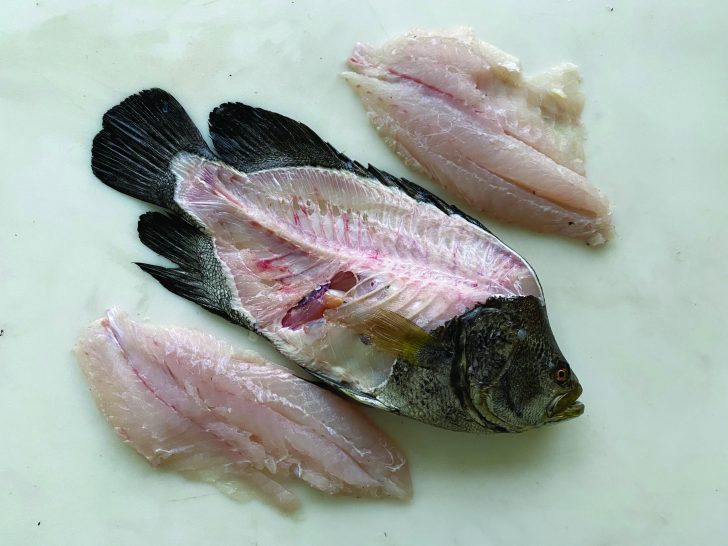By Michael Sipos, Florida Sea Grant, UF/IFAS Extension Collier County
Fun Facts:
- Florida State Record: 40 pounds, 13 ounces, caught off Fort Pierce
- IGFA World Record: 42pounds, 5 ounces, caught off South Africa
Tripletail: The fish that’s delicious, unique in appearance and puts up a great fight. What more can you ask for?

One thing is for certain: These fish have a strong association with structure and usually are targeted in Southwest Florida during stone crab season, from October to May, when there are plenty of buoys for them to hang out under.
Other common names for tripletail include buoyfish and eddyfish, because of their correlation to sea buoys, floating debris, pilings and docks.
Tripletail are a fast-growing species with relativity short lives. This fish’s lifespan is estimated to be five to 10 years with the oldest tripletail recorded by the Florida Fish and Wildlife Conservation Commission being 7.
Female tripletail reach sexual maturity at 1 to 2 years old, when they’re about 17 to 19 inches long , while male tripletail mature at about 10 inches long.
This species seems to spawn offshore for a few months in the summer, with peak spawning activity in July. Female tripletail release their eggs in batches and can spawn every three to five days during season.
A 24-inch female is estimated to produce 4.5 to 8 million eggs during a typical spawning season. Larval tripletail are known to grow fast and become more recognizable juveniles at about 0.35 inches.
Young tripletail color varies with some young fish displaying a bright or mottled yellow pattern, resembling a decaying leaf suspended near the surface. This yellow pattern can help young tripletail blend in with their offshore environment and hang out in golden sargassum weed patches or inshore, hidden among fallen mangrove leaves.
Adult tripletail are also masters at camouflage and are often mistaken as debris, themselves, laying nearly motionless, sideways, near the water’s surface, waiting for prey to swim by. Tripletail consume small fish and invertebrates, and my bait of choice is shrimp, as it’s easy to pitch, sinks at a slow rate and often irresistible.


Tagging studies done by the University of Southern Mississippi that have revealed some seasonal North/South migrations in the Gulf of Mexico and East Coast of the United States. The International Union for Conservation of Nature (IUCN) listed the Atlantic tripletail as a species of least concern and noted their population as stable.
Michael Sipos is the Florida Sea Grant agent for UF/IFAS Extension Collier County. Contact him at sipos624@uf.edu. For more fishy content and updates on upcoming educational programs, please check out the Collier County Sea Grant Facebook page, YouTube Channel, Instagram listing or Michael Sipos’ UF/IFAS blog.

